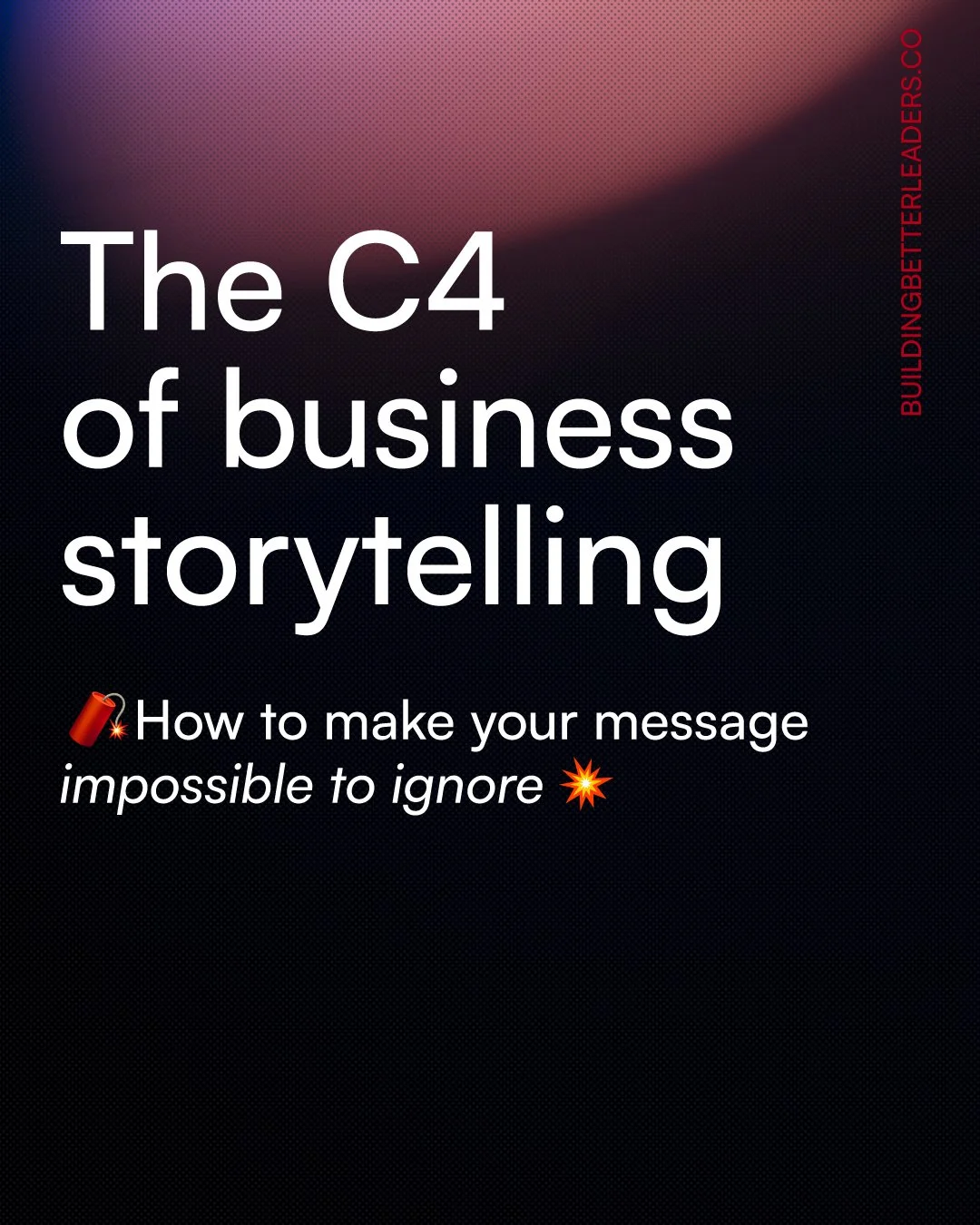The C4 of business storytelling: How to make your message explosive
In business, the real power lies in your ability to blow away your audience with a message they can’t ignore. Here’s a four-step formula to do just that.
Whether you’re leading a team, pitching to investors, presenting to the C-suite or winning over a client, the way you tell a story can determine whether people remember it or forget it five minutes later.
Storytelling isn't just sharing anecdotes. It's about structuring communication in a way that transforms. That’s where the C4 of Business Storytelling comes in.
🧨 Yes, like the explosive, because when used well, it can create a powerful impact. 💥
The C4 Model
1. Context – Set the Scene
Who, when, and where. Give just enough background so your audience knows why they should care. This creates clarity and orients them.
2. Conflict – The Tension or Problem
This is the hook. Every great story has a “but then…” moment. Without conflict, there’s no reason to listen. This could be a market challenge, a customer demand, a sudden internal change. Anything that creates stakes.
3. Choice – What Action Was Taken
What decision did you (or your team) make to address the conflict? The choice is the heart of your story.
4. Change – The Outcome + Consequences
Outcome is the fact of what happened ie. the payoff.
Consequences are the effect of outcome eg. how did it impact the business or the people.
Application: “Winning Back a Client” Example
Context:
Last quarter, our account team was preparing a routine renewal for one of our largest clients. We’d had a good relationship for five years.
Conflict:
Two weeks before the renewal meeting, we learned the client was considering switching to a competitor offering a lower price and faster delivery. Losing them would mean a 15% drop in revenue for the quarter.
Choice:
Instead of competing on price, we decided to focus on value. We pulled together data showing the cost savings our solution had generated over the past year, paired with testimonials from their own staff on how our service made their work easier. We also proposed a joint innovation workshop to co-create their next growth step.
Change:
The client not only renewed but expanded their contract by 20%. They said, “You reminded us why we partnered with you in the first place. You get us.” The lesson we learnt: In the face of pressure, the right choice
In closing, stories stick because they connect emotionally, not just logically.
The C4 model works because it’s simple, structured, and forces you to include tension and transformation—the two things that keep people engaged!
Contributor: Kausern Hieu

